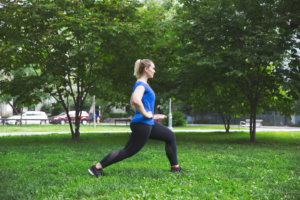 Have you been going from race to race, or activity to activity, just barely keeping the wheels on?
Have you been going from race to race, or activity to activity, just barely keeping the wheels on?
Are nagging aches and pains that turning into full blown injuries? It may be time to put in the corrective work and focus on the long game.
Stay active in your preferred sport or activity until you choose to do something else—not having injuries sideline you.
Now that the NYC Marathon is over, it is a great time to identify and fix your asymmetries that contribute to repetitive strain injuries.
Mobility = Strength + Flexibility
As an NYC chiropractor, I commonly see signs of a repetitive running injury rear its head when training-especially after the long runs. The repetitive mechanics of running requires symmetry, endurance, and mobility. We actually start to lose the mobility of the tissues we need. When we use the same muscles over and over they become hypertonic and the fascia can develop adhesions.Any asymmetry in your gait can be amplified over the course of 2000+ steps in each mile. On those long runs your mind can push beyond the capacity of the tissues. These factors combine and result in muscular compensations to work around a problem. At CSC+M we commonly see movement issues in the quads, calves, and hip flexors. This is where 3D stretching for mobility and recovery comes in.
3-D Matrix
I was first introduced to these concepts from the functional video digest series from Gary Gray around 2007 and have incorporated them into recovery and treatment since.
The key to ironing out asymmetry and compensations is a movement routine that can handle all these forces in a controlled manner. Functional dynamic stretching in 3 planes of motion is a specific way to warm-up your body before a workout, recover, or prepare you for the next workout. Our joints and muscles move in three planes of motion: sagittal (forward and back), frontal (side to side), and transverse (rotation). Tissues and fascia will adapt to the imposed demand and your dynamic stretches and movement prep need to be able to mimic the motion of your sport to get rid of your symptoms.
We use the basic 1-2-3 exercises (1. sway side to side, 2. Step front to back, 3. pivot like a golf swing) to incorporate basic pain free movement in the X-Y-Z axis into our low back pain patients. Try this same concept with dynamic stretches for the quads, hip flexors, and calves.
Hip Flexor
Position: Half kneeling.
Movement: get to the point where you feel a stretch and use your hands to drive the movement.
- Sagital-reach overhead
- Frontal-reach overhead then side to side let the pelvis shift from right to left
- Transverse-reach arms forward rotate arms left then right while looking straight ahead
Repeat each movement 5-10 times then switch legs and repeat
Quads
Position: Half kneeling, back knee on a yoga block, with toe up a wall(couch stretch position).
Movement: get to the point where you feel a stretch and use your hands to drive the movement.
- Sagital-reach forward then overhead let the pelvis move forward
- Frontal -reach overhead then side to side; let the pelvis shift from right to left
- Transverse-reach forward rotate arms left then right look straight ahead
Repeat each movement 5-10 times then switch legs and repeat
Calves
Position: Power posture lean forward on one foot in a stagger stance try to keep hips level in the start position.
Movement: use the swing leg to drive the movement in all 3 planes of motion.
- Sagital-drive the swing leg forward
- Frontal-drive the swing leg forward then shift the hips side to side let the hips shift from left to right.
- Transverse-drive the swing leg forward, then rotate to the left then the right.
Repeat 5-10 times, then switch
For more strength you can add the 3-D lunge matrix with weight.
